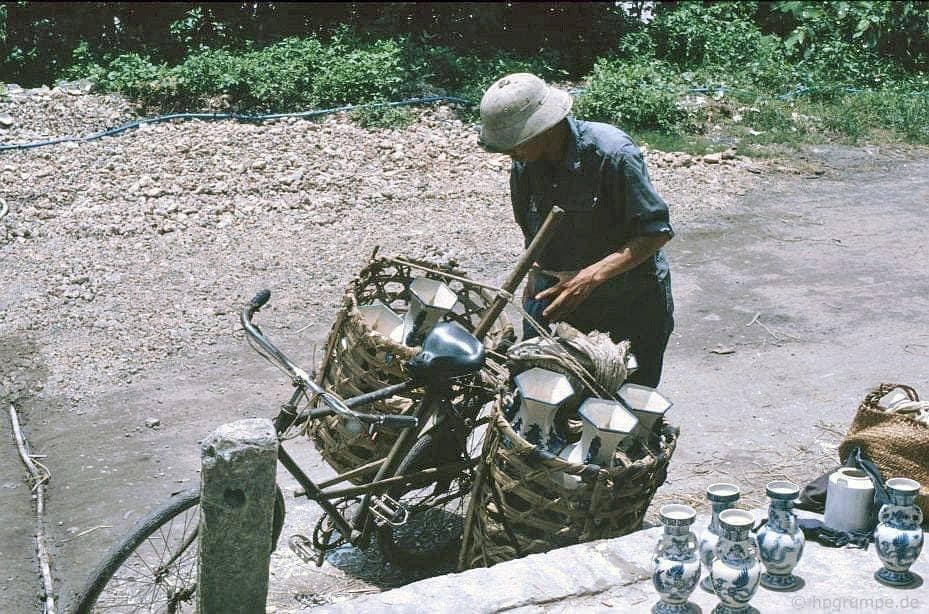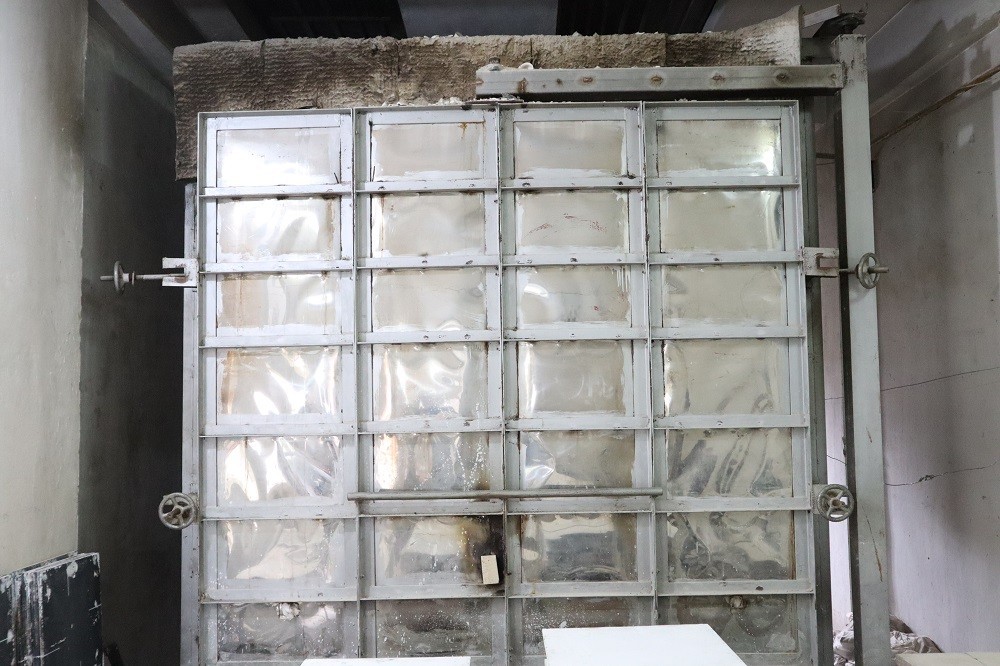
The old pottery production methods resulted in low output and negatively impacted both worker health and the environment. (Photo: NVCC)
A Village Once Shrouded in Smoke

Gas kilns are now commonly used in Bat Trang due to their superior efficiency. (Photo: Cong Minh)
Bat Trang village has long been renowned for its high-quality ceramics and bricks in Hanoi. In the past, before the adoption of advanced machinery and technology, the village was engulfed in smoke from the operation of the traditional kilns.
Villagers recall that Bat Trang used to frequently use coal-fired kilns to fire pottery. Consequently, the air around the village was perpetually covered in a gray haze, and black soot marks on walls and throughout the village streets are memories no one wishes to revisit.
Moreover, some local pottery producers stated that pottery making had been passed down from their grandparents and parents. In those circumstances, they couldn’t find a solution to this issue and had to accept living with the smoke and dust despite severe health impacts.
Around 2010, the pollution problem in Bat Trang village became severe, with residents living in stifling polluted air. Up to 70% of the population suffered from respiratory disorders, and more than 80% had trachoma. This was because the village mainly used box kilns fueled 90% by coal and 10% by wood. During those years, the local air quality was consistently low, falling within Hanoi’s air pollution alert levels.
Leading the Way as a “Green” Craft Village

According to Mr. Dang Dinh Tuc, head of the Giang Cao Pottery Village representative committee (Bat Trang commune): 70% of the village's products are exported. Domestic and international customers always demand intricate patterns and designs, requiring stable firing temperatures to produce the best quality products.
To support the village in meeting consumer demands, Japanese partners donated a gas kiln with a one cubic meter capacity. The results were very positive, with products achieving stable quality and significantly reduced smoke and dust.
“Quickly adopting new firing technology, from 2005 to 2007, Bat Trang completely transitioned from coal-fired to gas or electric kilns. Since implementing the new technology in production, harmful gases have decreased significantly. The health of residents has been safeguarded, and the environment has gradually improved,” Mr. Dang Dinh Tuc affirmed about the village’s new direction.
Currently, 80% of production households in Bat Trang use gas kilns, while 20% use electric kilns. Mr. Nguyen Trong Nghia, the owner of a production facility in Giang Cao village, stated: “I invested in an electric kiln for my workshop after seeing the severe negative effects of harmful gases such as bronchitis, respiratory failure, and lung cancer. Therefore, using these types of kilns not only maximizes production energy savings but also protects our health. As pottery craftsmen, we need good health to focus on economic development.”
With the spirit of “not sacrificing the environment for economic growth,” Bat Trang villagers have long been striving to minimize air pollution from village activities and change the perception of each production household. Bat Trang villagers are determined to pursue economic development while ensuring environmental protection and safeguarding livelihoods.
“When we learned about using electric and gas technology, we at the Bau kiln decided to adopt and expand the method. Economic development is important, but human health and sustainable environmental stability are even more crucial,” Mr. Nguyen Thanh Nhu, the manager of the over 700-year-old Bau kiln, hopes that in the future, many people will still have the health to continue preserving the village’s traditions.
Additionally, Bat Trang villagers are currently exploring and investing in Tunnel kilns (continuous kilns). This type of kiln can reduce energy costs by 30% and other production costs. However, due to a lack of space, the craft village has not yet invested in it. The pottery village needs state support and encouragement policies to invest in new firing technology, create a green living environment, and ensure sustainable production.
With relentless efforts, the air pollution problem in Bat Trang commune has found initial solutions. The images of thick black smoke columns and soot-covered village roads are gradually disappearing. Today, Bat Trang is one of the pioneering craft villages in green transformation, combined with cultural tourism and many exciting activities.

























